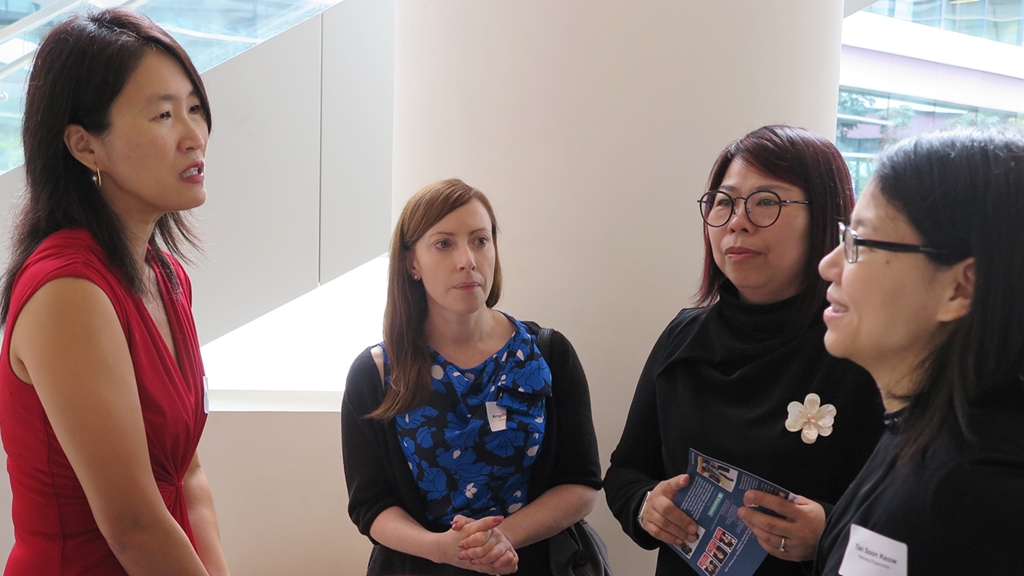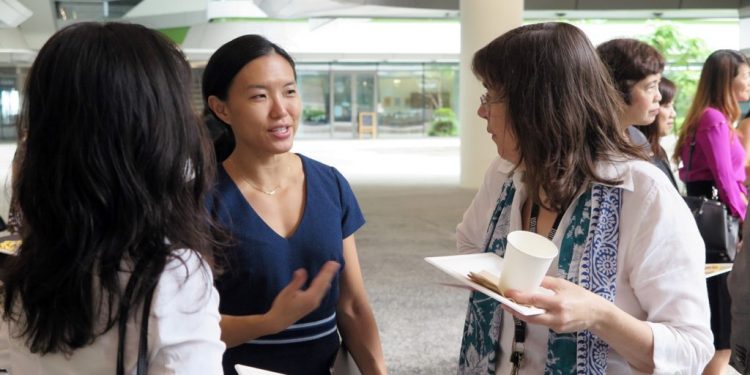In the science and technology fields in Singapore, only about one in every four employees is a woman. That has been the situation for the past decade. The growth of women specifically in infocomm technology is also half that of men, at about 10 per cent per year since 2011.
So, is that such a big deal? Yes, according to Second Minister for Manpower Josephine Teo.
“When young women who have the ability to master science, technology, engineering or mathematics (STEM) subjects shy away from these disciplines, it sets them on a course in life that is less likely to benefit from the uplift that technology brings to industries and careers. They may still do well, but who’s to say they could not have done better?” said SMS Teo at Singapore University of Technology and Design’s (SUTD) inaugural conference on women in technology and design on 15 January 2018.
The WIT(women in technology)@SG Special Interest Group was launched by the Singapore Computer Society at the conference to attract, support and retain women in STEM through mentoring, education, advocacy and industry exposure. Two SUTD professors and nine other women leaders from Citibank, Starhub, DellEMC and IBM Singapore are currently in the committee.
The Role of Educational Institutions
A research led by Mastercard in 2017 revealed that scholarships, successful role models and greater support from educational institutions were the top three motivators for girls aged 17 to 19 in Asia Pacific to pursue STEM careers. Fresh entrants in STEM jobs also expressed that earlier exposure to STEM industries through initiatives such as networking opportunities, internships and career fairs would have been a great help.
Labour experts like National Trade Union Congress’ Women’s Committee Chair K Thanaletchimi feel that the role of educational institutions is particularly crucial in stimulating women’s interests in STEM.
“We always talk about schools exposing females to STEM, but which part of the growing years are they doing it? If they are doing it at the upper secondary or tertiary level, it is far too late. If you look at some Scandinavian countries, childcare centres and kindergartens are putting in place initiatives just to let girls know there’s no gender disparity. There must be neutrality. We cannot imprint gender stereotypes in the child’s mind when they are at an early age,” said Ms Thanaletchmi, who is also a Nominated Member of Parliament.
Ms Thanaletchimi suggested that secondary schools could give female students an eye-opener through real-life exposure and role models.
She said: “Secondary schools can provide internships in STEM industries, even for a month. Better still, if they can work alongside a female counterpart [and see that it can be a career possibility].”
Ms Thanaletchimi added that women organisations could also rise to the occasion by offering an award or scholarship for female students studying STEM subjects.
Current Efforts
 (Photo credit: Avelyn Ng) Head of SUTD’s Humanities, Arts & Social Sciences Prof Lim Sun Sun (far left) having discussions with attendees at the inaugural Women in Technology and Design conference during the break.
(Photo credit: Avelyn Ng) Head of SUTD’s Humanities, Arts & Social Sciences Prof Lim Sun Sun (far left) having discussions with attendees at the inaugural Women in Technology and Design conference during the break.
Currently, intervention is being done at a later stage. SUTD, for instance, seems to be making headway in getting more women into the STEM sectors.
As a relatively new university with just six years of existence, it has about 41 per cent of females at matriculation. This is slightly better than the overall female enrolment in science and technology courses at the local universities, which is under 40 per cent. Also, more than 65 per cent of SUTD female students in the 2015 and 2016 cohorts went on to take STEM-related jobs upon graduation.
SUTD also regularly conducts workshops for women in technology and design and celebrates the achievements of women inventors. Notably, it has two annual scholarships specifically for female students – the Kewalram Chanrai Group scholarship and the Mastercard scholarship.

